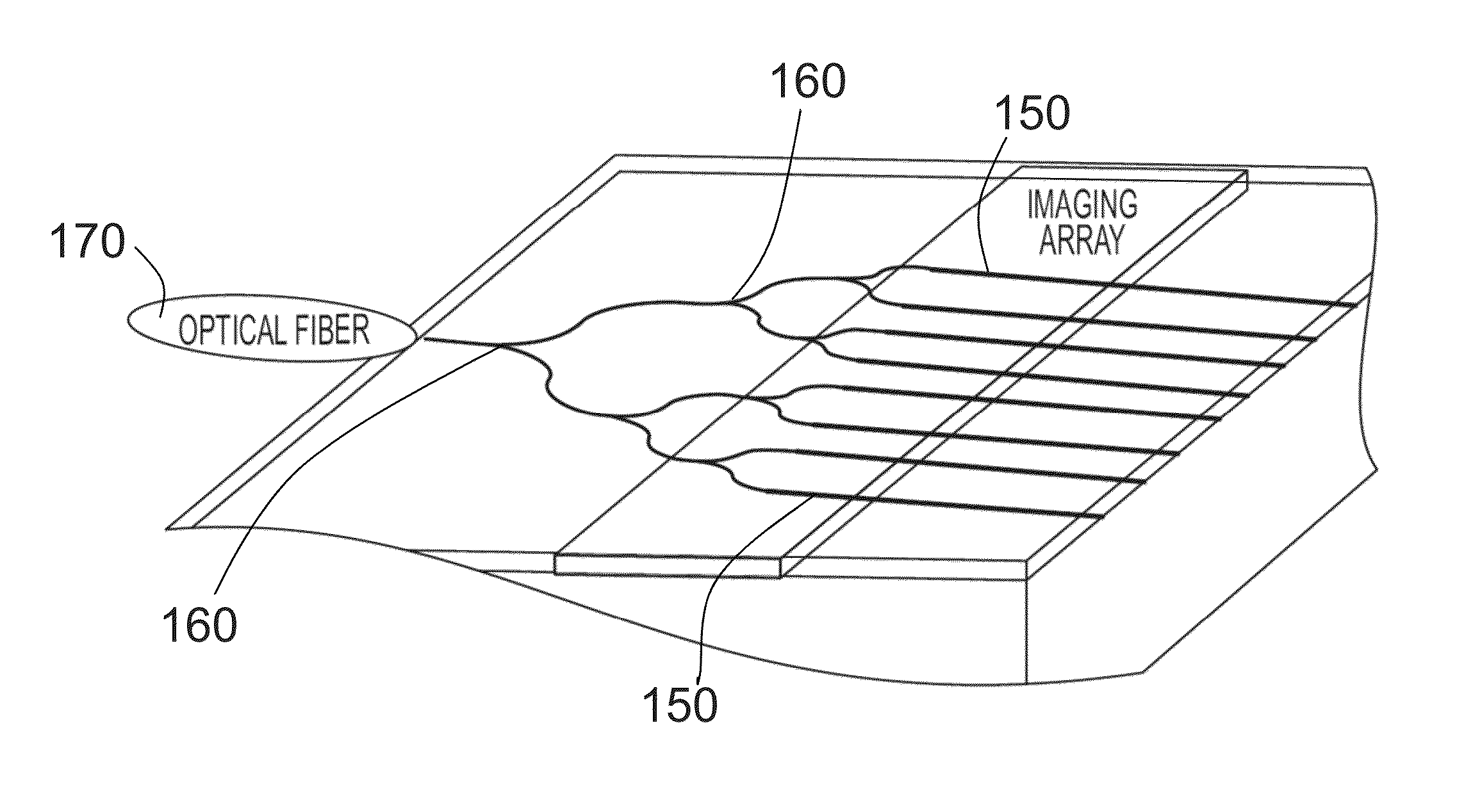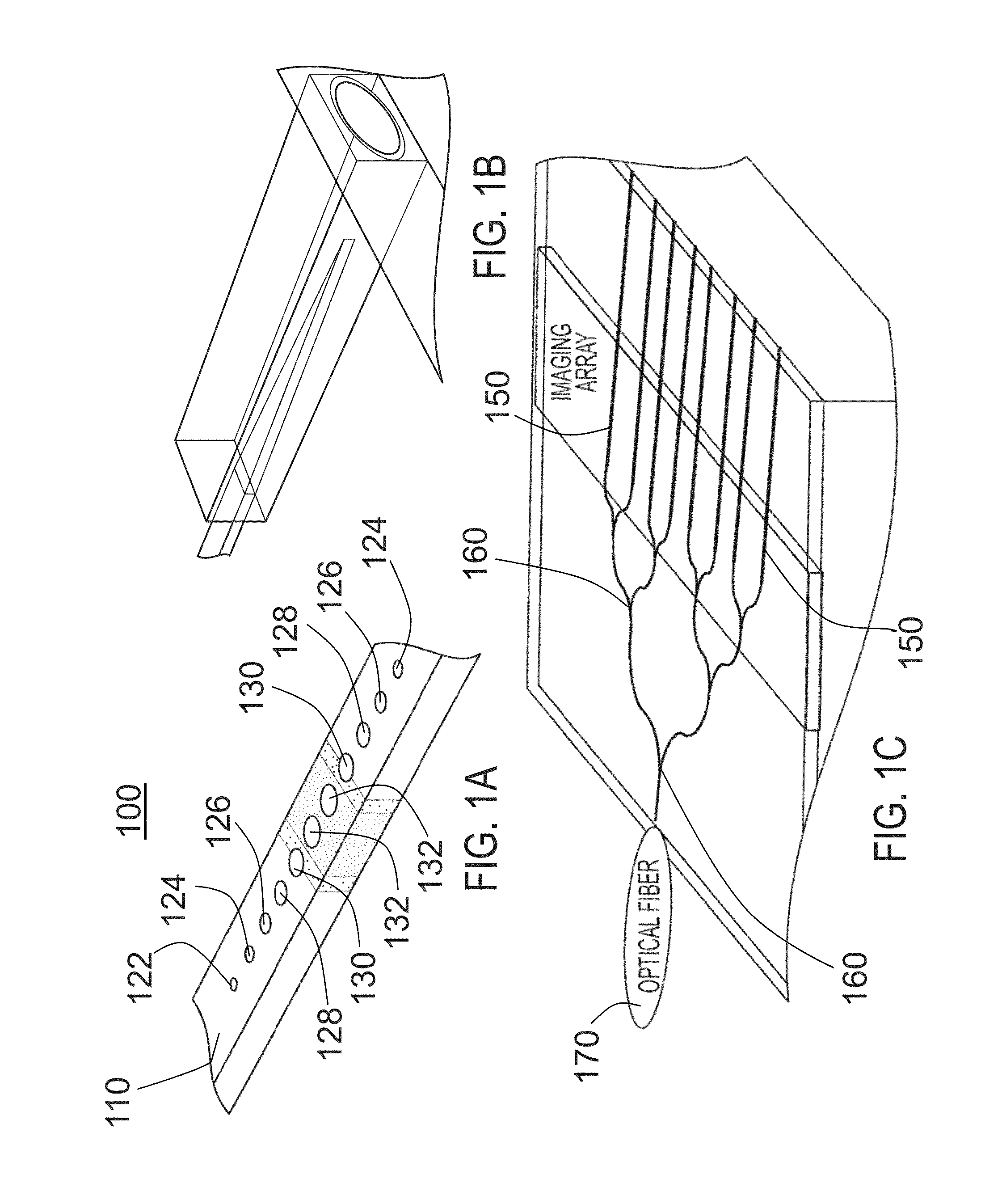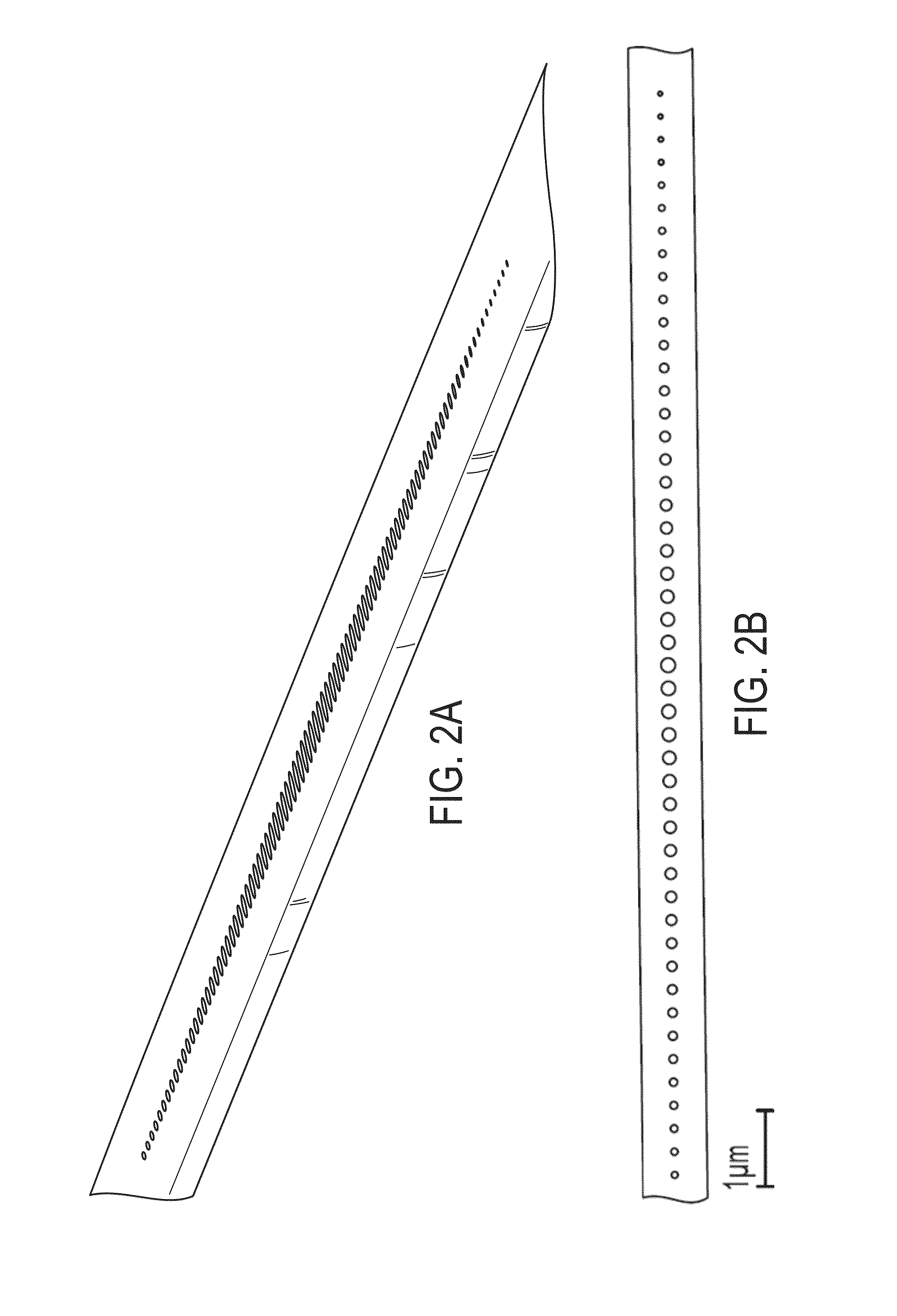Integrated nanobeam cavity array spectrometer
a cavity array and nanobeam technology, applied in the field of spectrometers, can solve the problem that super-prism based spectrometers cannot provide complete separation of adjacent wavelength channels, and achieve the effect of small siz
- Summary
- Abstract
- Description
- Claims
- Application Information
AI Technical Summary
Benefits of technology
Problems solved by technology
Method used
Image
Examples
Embodiment Construction
[0039]A mirror that provides a preferred Gaussian field distribution can be obtained by tapering conventional Bragg mirror by satisfying the following criteria. The periodicity of Bragg mirror is maintained—that is grating sections of the new mirror have constant periodicity. For example, if gratings are formed by etching holes along a waveguide, then the hole to hole distance are constant throughout the waveguide. Field distribution inside a conventional Bragg mirror goes as exp(−κx) where κ terms as mirror strength. The cavity design of the present invention, such as is shown in FIG. 1A, has a Gaussian field distribution exp(−σx2), which can be achieved by making the mirror strength of the conventional Bragg mirror dependent on the position within the grating as κ=σx. That is, the strength of grating section is increasing as a function of the distance from the center of the cavity. Such a mirror of the present invention may be referred to as a “modulated Bragg mirror”.
[0040]Archit...
PUM
 Login to View More
Login to View More Abstract
Description
Claims
Application Information
 Login to View More
Login to View More - R&D
- Intellectual Property
- Life Sciences
- Materials
- Tech Scout
- Unparalleled Data Quality
- Higher Quality Content
- 60% Fewer Hallucinations
Browse by: Latest US Patents, China's latest patents, Technical Efficacy Thesaurus, Application Domain, Technology Topic, Popular Technical Reports.
© 2025 PatSnap. All rights reserved.Legal|Privacy policy|Modern Slavery Act Transparency Statement|Sitemap|About US| Contact US: help@patsnap.com



